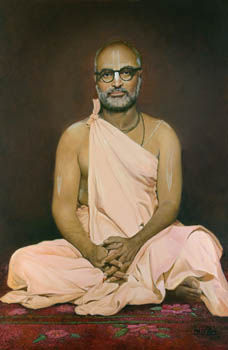What is the Significance of Śyāma-varṇa Rādhā?
- Jun 17, 2017
- 1 min read

Question: We see that the deities of Kṛṣṇa at different temples are either śyāma-varṇa (dark-complexioned) or gaura-varṇa (molten-gold-complexioned). However, only at a couple of places, that is, at Ṭoṭā-gopinātha in Purī and at Māna-sarovara in Vṛndāvana, do we see that the deity of Śrī Rādhā is of śyāma-varṇa. Is there a special purpose behind this?
Śrīla Bhāratī Gosvāmī Mahārāja: When Śrīmatī Rādhikā, out of acute feelings of separation from Śrī Kṛṣṇa, becomes completely absorbed in cintana (constant remembrance) of His name, form, qualities and pastimes, Her meditation sometimes intensifies to the point that She assumes His dark complexion. With great appreciation and reverence for this special mood of Hers, some devotees have established Her deity as śyāma-varṇa. In the same way, when Śrī Kṛṣṇa becomes absorbed in remembrance of Śrīmatī Rādhikā, He assumes Her molten-golden complexion.
With a similar idea in mind, Śrī Śrīmad Bhakti Prajñāna Keśava Gosvāmī Mahārāja installed a gaura-varṇa, molten-gold-complexioned Kṛṣṇa in all of the Śrī Gauḍīya Vedānta Samiti maṭhas. To explain the siddhānta in this regard, Śrīla Keśava Gosvāmī Mahārāja composed an aṣṭaka entitled Śrī Rādhā-vinoda-vihāri-tattvāṣṭakam, in which he has written in the first verse, rādhā-cintā-niveśena, which means “I worship the lotus feet of that form of Śrī Kṛṣṇa who, due to being thoroughly immersed in separation from Śrīmatī Rādhikā, has lost His dark complexion and has assumed Her bright, molten-gold luster.”
In this way, the gaura-varṇa form of Śrī Kṛṣṇa and the śyāma-varṇa form of Śrīmatī Rādhikā both reveal the intensity of Their moods of separation from each other.




Comments